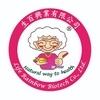
Content sponsored by:
Life Rainbow
The impact of deoxynivalenol on the poultry and its solution
Published: September 13, 2020
Source : Life Rainbow Biotech
Deoxynivalenol (DON) is one of the most common trichothecenes mycotoxins, and is a natural occurrence mycotoxin produced by Fusarium graminearum. DON also is known as vomitoxin due to its strong emetic effects after consumption and causes animals’ vomit. DON occurrence in food and feed represents more than 90% of the total number of samples, and it is a potential marker of the occurrence of other mycotoxins.
The occurrence of mycotoxins originates from before and after harvesting of crops, processing, transportation, or storage. The crops or raw materials suffer from mould infection and produce a large number of mycotoxins. Raw materials contaminated by mycotoxins will continue to pollute the final product and feed; therefore, mycotoxins also known as "silent killers".
The feed contaminated with DON may cause toxic symptoms by affecting the combination of neurotransmitters in the brain, thereby reducing appetite, feeding off or causing vomiting. It also affects the intestinal tract, causing abdominal pain, diarrhoea, etc.
The research found that broiler long term exposed to DON affected the morphology of the small intestine. DON caused the villus height, and the ratio of villus height and crypt depth were reduced in the intestine and caused the animal to grow slow and induced the inflammation response. The impact of mycotoxins on economic animals has been discussed for a long time, due to mycotoxins have adverse effects on livestock production performance, reproductive ability, intestinal health, and indirectly increase the cost of farming.
Mycotoxins can contaminate many raw materials and cause significant health risk to animals. Therefore risk management of mycotoxin and using mycotoxin detoxifier are the key to protect the animal also is an essential procedure in the farm management. Life Rainbow Biotech has fourteen years of research on mycotoxins and has developed detoxify mycotoxin product, mycotoxin degrading enzymes - Toxi-Free PLUS® consists three different type enzymes in one product which specific activity to convert mycotoxins into nontoxic to reduce the toxicity caused to animals.
We conducted an in vivo experiment to determine the effectiveness of Toxi-Free PLUS® on poultry immunity. The broilers were divided into three groups: control group, DON group and Toxi-Free PLUS® with DON group, observed the broiler growth performance and antibody levels against ND and IB. After cultured for six week, we observed that Toxi-Free PLUS ® with DON group increased the number of the antibody levels and body weight gain. Besides enhanced immunity, through farm trial we also found that, applied Toxi-Free PLUS® as daily care in poultry feed would increase poultry activeness, growth performance, egg production, and decrease the mortality.
Mycotoxins have complicated patterns, different reaction times, interactions between toxins, and animal health conditions cause it challenging to anticipate specific effects on poultry. Therefore, suitable risk management methods with appropriate feeding management and long-term feeding with Toxi-Free PLUS® are able to reduce the impact of mycotoxins on the layer egg production and effectively improve poultry production efficiency.
1. Kushiro M. Effects of Milling and Cooking Processes on the Deoxynivalenol Content in Wheat. Int J Mol Sci. 2008;9:2127–2145.
2. Sobrova P, Adam V, Vasatkova A, Beklova M, Zeman L, Kizek R. Deoxynivalenol and its toxicity. Interdiscip Toxicol. 2010;3(3):94-99.
3. Pinton P, Oswald IP. Effect of deoxynivalenol and other Type B trichothecenes on the intestine: a review. Toxins (Basel). 2014;6(5):1615-1643.
4. Yu YH, Hsiao FS, Proskura WS, Dybus A, Siao YH, Cheng YH. An impact of deoxynivalenol produced by Fusarium graminearum on broiler chickens. J Anim Physiol Anim Nutr (Berl). 2018;102(4):1012-1019.
Related topics:
Recommend
Comment
Share
Recommend
Reply

Would you like to discuss another topic? Create a new post to engage with experts in the community.




